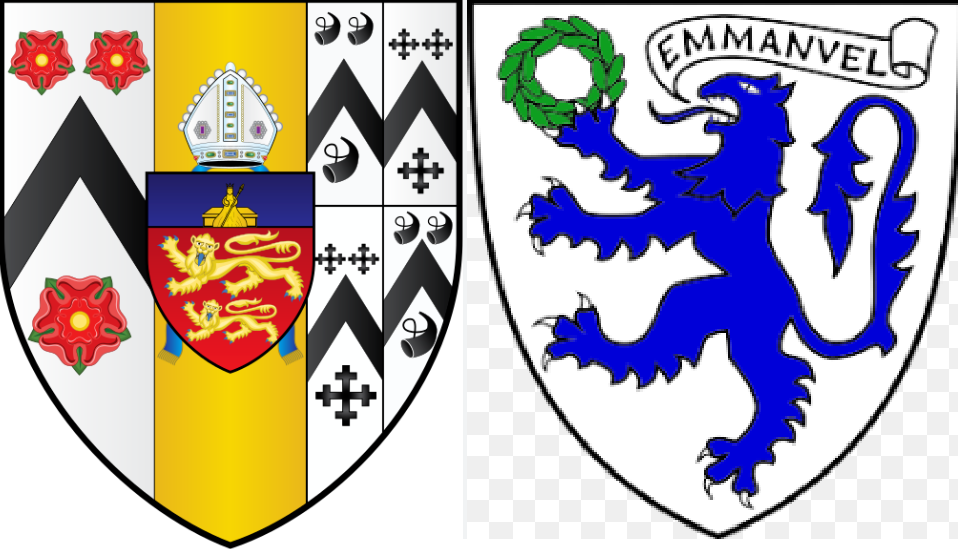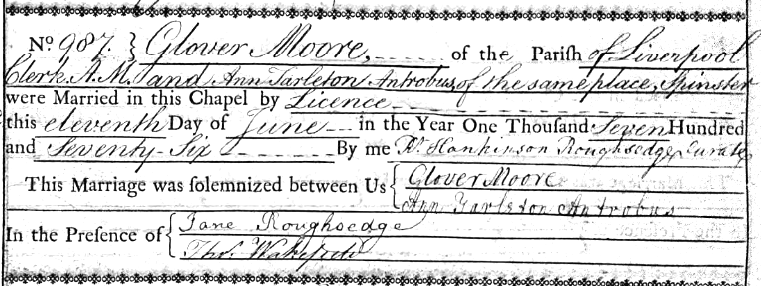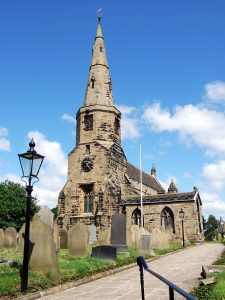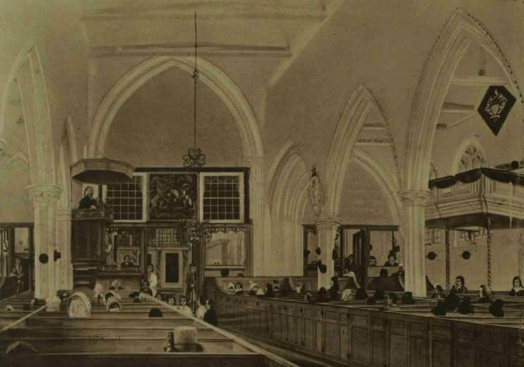Rector - Glover Moore (1736-1809)

Glover Moore GSMC-GXD was a local man, having been born in Barton, Downholland, Lancashire in 1736. He was baptised on 18th April the same year and was the second child of Nicholas Moore LWGS-V81 and Elizabeth Glover M68Z-2KK, from whom he inherited his unusual Christian name. His mother died in 1741 when Glover was just five years old and his brother Henry would have been eight.
As a young man however, he was fortunate enough to attend Brasenose College, Oxford from 1756 where he graduated with a BA in 1760. He was ordained as a priest in 1761 and worked as a curate at Standish until 12th June 1768. He began to study for an MA at Emmanuel College, Cambridge which he completed in 1772 (according to the Cambridge University Alumni, 1261-1900 list). At the same time he was working as a curate at St. Peter and St. Nicholas’ church, Liverpool.

If we look at Gore’s Directory 1774, we can see Reverend Glover Moore was living at 162 Dale Street, Liverpool; his occupation was listed as clerk. He was a single man at that point but this was about to change as he met Ann Tarleton Antrobus 47P2-M2Z, daughter of Thomas and Catherine Antrobus. Dr. Antrobus was one of only three surgeons working at the first Liverpool Infirmary on William Brown Street which opened on 25th March 1749. (The site that is now occupied by St. George’s Hall).

Glover and Ann were married in St. Nicholas church in Liverpool on 11th June 1776. Their first child was a baby boy, who they named Henry Glover KD9T-MQ9. Shortly after this, the family moved to Halsall when Rev. Moore was appointed rector of St. Cuthbert’s church on 20th August 1778 (under the patronage of Charles Lewis Mordaunt KFR4-41P of Halsall Hall).
Their family grew to include at least nine more known children, two of whom were twins, Edward 9KCQ-TPB and Richard GSMJ-YQW, born on 3rd August 1792. Both sons followed in their fathers’ footsteps and became clergymen – Reverend Edward was rector of Gisleham, Suffolk and then Whitchurch, Berkshire and Reverend Richard was the vicar of Lund, Lancashire as well as being a Justice of the Peace.
One of the first contributions Reverend Glover Moore made to St. Cuthbert’s was to cover the expense of the recasting of one of the church bells in 1786. John Segar, a gentleman financed another bell and a third was paid for by subscription; each bell is inscribed accordingly.

In 1793 a new Advowson, dated 25th July, was drawn up at the request of the patron, Charles Lewis Mordaunt, the contents of which stated that the present incumbent was Reverend Moore who disclosed that ‘the Living produces £950 per annum clear, after paying curates, taxes, and all outgoings whatever, exclusive of the forty pounds every second year from Snape’. This equates to £119, 329.53 as at June 2025 (Bank of England calculator). In addition, the perpetual advowson produced ‘at present about one thousand three hundred pounds per annum, and capable of considerable improvement’ – the equivalent of £163, 293.04 (Bank of England calculator). This income was made from the Tithes of Halsall, Downholland, Lydiate, Male and Melling with the additional payment of £40 every other year which was received from Snape in the township of Scarisbrick. At that time, Halsall and Downholland contained approximately ‘three thousand acres of upland and two thousand acres of low-land. Lydiate, Male and Melling, from three to four thousand acres; but the exact quantity not ascertained’. It gets even better because these were ‘Cheshire Acres each measuring upwards of two statute-acres’. Acre (Cheshire) – Wikipedia

Nevertheless, the asking price of the Advowson was £10,500 estimated to be worth £1,318,905.30 in June 2025. We know that the Advowson was sold in 1800 to Jonathan Blundell LWP2-YZB of Liverpool, a colliery owner and slave trader – it is not clear at this time what the price of the Advowson was in 1800. However, Jonathan Blundell died in December 1800 and left the patronage of Halsall to his son, Reverend Thomas Blundell MH5X-MR4, who presented himself as rector in 1809.
Reverend Moore had no intention of resigning from such a secure position any time soon. In December 1794 a painting was created of the interior of St. Cuthbert’s church by local man, Thomas Turner. The gentleman in the pulpit is said to be Reverend Glover Moore but we will never know who the people in the congregation were. This piece of artwork was featured in an article in the Illustrated London News 1939, 28th January edition written by Frank Davis.

Life continued comfortably for the rector and his family. His oldest son Henry Glover Moore married his first wife Elizabeth at St. Nicholas’ church, Liverpool where Reverend Glover officiated at the happy event.

Sadly, a year later, in the summer of 1809 Reverend Moore passed away; he was buried at St. Cuthbert’s church and a memorial tablet was installed in the chancel of the church where he had been the rector for 31 years. His widow, Ann moved back to her home town, Liverpool, where she set up residence in Crabtree Lane (now Falkner Street). Ann died in May 1829 and was buried at St. John’s church, Liverpool.

Although fairly difficult to decipher, Reverend Moore’s Will is available to read online – follow the link to the National Archives at Kew to view it.